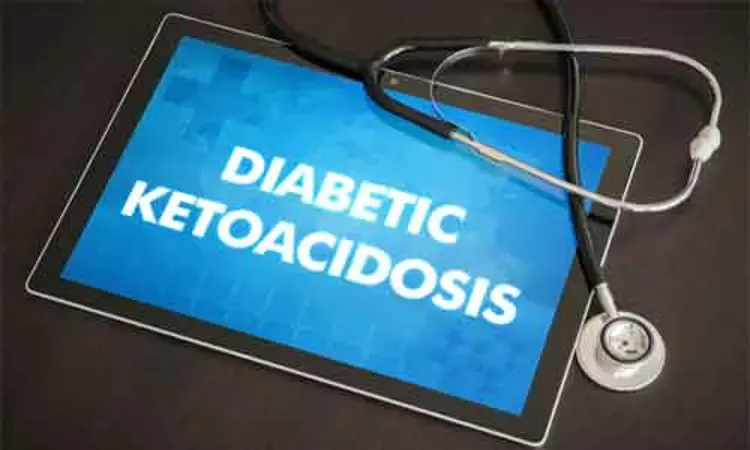- Home
- Medical news & Guidelines
- Anesthesiology
- Cardiology and CTVS
- Critical Care
- Dentistry
- Dermatology
- Diabetes and Endocrinology
- ENT
- Gastroenterology
- Medicine
- Nephrology
- Neurology
- Obstretics-Gynaecology
- Oncology
- Ophthalmology
- Orthopaedics
- Pediatrics-Neonatology
- Psychiatry
- Pulmonology
- Radiology
- Surgery
- Urology
- Laboratory Medicine
- Diet
- Nursing
- Paramedical
- Physiotherapy
- Health news
- Fact Check
- Bone Health Fact Check
- Brain Health Fact Check
- Cancer Related Fact Check
- Child Care Fact Check
- Dental and oral health fact check
- Diabetes and metabolic health fact check
- Diet and Nutrition Fact Check
- Eye and ENT Care Fact Check
- Fitness fact check
- Gut health fact check
- Heart health fact check
- Kidney health fact check
- Medical education fact check
- Men's health fact check
- Respiratory fact check
- Skin and hair care fact check
- Vaccine and Immunization fact check
- Women's health fact check
- AYUSH
- State News
- Andaman and Nicobar Islands
- Andhra Pradesh
- Arunachal Pradesh
- Assam
- Bihar
- Chandigarh
- Chattisgarh
- Dadra and Nagar Haveli
- Daman and Diu
- Delhi
- Goa
- Gujarat
- Haryana
- Himachal Pradesh
- Jammu & Kashmir
- Jharkhand
- Karnataka
- Kerala
- Ladakh
- Lakshadweep
- Madhya Pradesh
- Maharashtra
- Manipur
- Meghalaya
- Mizoram
- Nagaland
- Odisha
- Puducherry
- Punjab
- Rajasthan
- Sikkim
- Tamil Nadu
- Telangana
- Tripura
- Uttar Pradesh
- Uttrakhand
- West Bengal
- Medical Education
- Industry
Diabetic ketoacidosis in children and adolescents: Diagnostic and Therapeutic Pitfalls

A new study by Eirini Kostopoulou and team showed that in potentially deadly medical emergency, Diabetic ketoacidosis (DKA), accurate and speedy diagnosis, early management, and careful monitoring are crucial for breaking the cycle of life-threatening episodes and preventing serious sequelae in children and adolescents. The findings of this study were published in Diagnostics.
DKA is a common manifestation of Type 1 Diabetes Mellitus (T1DM) and, less frequently, Type 2 Diabetes Mellitus (T2DM) in children and adolescents. It is an immediate, severe consequence of relative insulin insufficiency. Acidemia, hyperglycemia, and/or ketonuria are the biochemical triads that describe it. Any physiological stress, including infections, can induce DKA, with gastroenteritis and urinary tract infections being the most common triggers. The current study seeks to increase knowledge of diagnostic and therapeutic pitfalls that make the best diagnostic and therapeutic response to this pediatric emergency fairly difficult, as well as a high index of suspicion surrounding them.
The Pubmed/Medline and Scopus databases, which include publications published from 2000 onwards, were used to perform a review of the literature. Differentiating between T1DM and T2DM, DKA and hyperosmolar hyperglycemic state (HHS), and DKA and alternative diagnoses presenting with overlapping symptoms, such as pneumonia, urinary tract infection, asthma exacerbation, acute abdomen, gastroenteritis, and central nervous system infection, are among the diagnostic challenges.
The key findings of this study were:
Making the distinction between type 1 and type 2 diabetes is one diagnostic problem. High body weight, Hispanic or African heritage, as well as family history of the condition and/or insulin resistance, are common among children with type 2 diabetes who are at risk for ketosis.
Their beta cells restart secreting insulin following therapy even if there is evidence of autoimmune. Ketosis was absent in hyperosmolar hyperglycemic state, a much deadlier condition.
For example, urinary tract infection, gastroenteritis, excessive activity, or a respiratory tract infection might all be confused for diabetic ketoacidosis.
A thorough history can show how the basic symptom triad progresses. Infection, however, may cause the disease to worsen. Beta-hydroxybutyrate, the primary ketone in diabetic ketoacidosis, was not picked up by nitroprusside testing.
Water balance and electrolyte concentrations must be closely monitored and often recorded during fluid resuscitation with 0.9% saline or lactated Ringer's.
Reference:
Kostopoulou, E., Sinopidis, X., Fouzas, S., Gkentzi, D., Dassios, T., Roupakias, S., & Dimitriou, G. (2023). Diabetic Ketoacidosis in Children and Adolescents; Diagnostic and Therapeutic Pitfalls. In Diagnostics (Vol. 13, Issue 15, p. 2602). MDPI AG. https://doi.org/10.3390/diagnostics13152602
Neuroscience Masters graduate
Jacinthlyn Sylvia, a Neuroscience Master's graduate from Chennai has worked extensively in deciphering the neurobiology of cognition and motor control in aging. She also has spread-out exposure to Neurosurgery from her Bachelor’s. She is currently involved in active Neuro-Oncology research. She is an upcoming neuroscientist with a fiery passion for writing. Her news cover at Medical Dialogues feature recent discoveries and updates from the healthcare and biomedical research fields. She can be reached at editorial@medicaldialogues.in
Dr Kamal Kant Kohli-MBBS, DTCD- a chest specialist with more than 30 years of practice and a flair for writing clinical articles, Dr Kamal Kant Kohli joined Medical Dialogues as a Chief Editor of Medical News. Besides writing articles, as an editor, he proofreads and verifies all the medical content published on Medical Dialogues including those coming from journals, studies,medical conferences,guidelines etc. Email: drkohli@medicaldialogues.in. Contact no. 011-43720751


